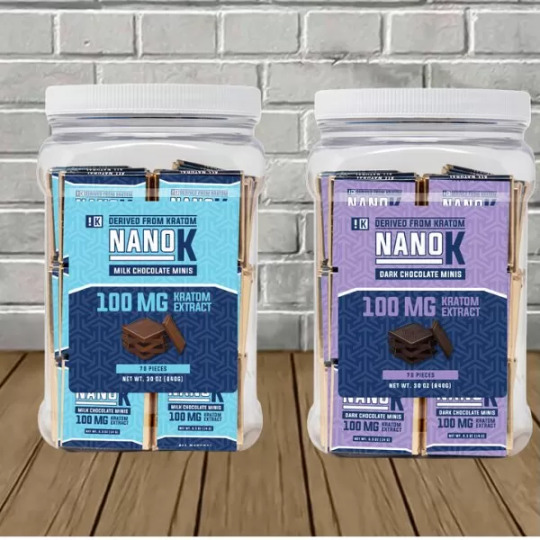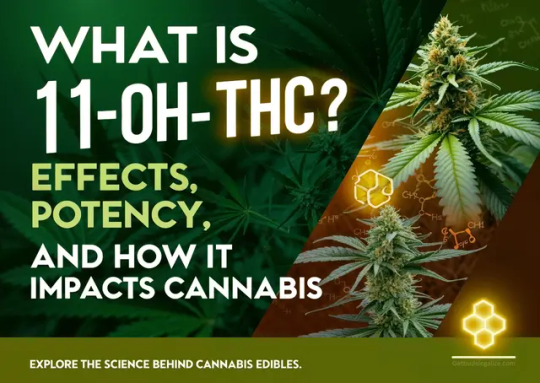#Hydroxy
Explore tagged Tumblr posts
Text
Cas No: 2374-03-0 | 4-Amino-3-Hydroxy Benzoic Acid
Exploring 4-Amino-3-HydroxyBenzoic Acid (CAS No: 2374-03-0): A Key Compound in Chemistry and Medicine
In the realm of organic chemistry, compounds with a unique combination of functional groups can exhibit remarkable properties. One such compound is 4-Amino-3-HydroxyBenzoic Acid, identified by its Chemical Abstracts Service (CAS) number 2374-03-0. This compound plays a significant role in various scientific and industrial applications, ranging from the development of pharmaceutical agents to its potential use in research and manufacturing.

What is 4-Amino-3-HydroxyBenzoic Acid?
4-Amino-3-Hydroxy Benzoic Acid is an organic compound that belongs to the family of benzoic acids. Its structure consists of a benzene ring, with two key substituents:
Amino group (-NH2) attached at the 4-position.
Hydroxyl group (-OH) attached at the 3-position.
This arrangement makes it a derivative of salicylic acid, which is the base compound for many aspirin-like drugs. However, the introduction of the amino group opens up new avenues for chemical reactions and biological interactions.
Chemical Structure and Properties
The IUPAC name for 4-Amino-3-HydroxyBenzoic Acid is 3-hydroxy-4-aminobenzoic acid, reflecting the locations of the functional groups on the benzene ring. With the molecular formula C7H7NO3, the compound is a white to off-white solid, typically in crystalline form. The key physical properties include:
Molecular weight: 167.14 g/mol
Melting point: Around 180–185°C
Solubility: It is sparingly soluble in water but soluble in organic solvents such as ethanol and methanol.
The hydroxyl group (–OH) and the amino group (–NH2) contribute to its potential reactivity, allowing it to be involved in diverse reactions such as esterification, nucleophilic substitution, and condensation.
Applications in Pharmaceutical and Medicinal Chemistry
4-Amino-3-Hydroxy Benzoic Acid is primarily known for its role in the development of drugs and pharmaceuticals. Its structural similarity to salicylic acid (the active ingredient in aspirin) makes it a valuable starting point for the synthesis of compounds with anti-inflammatory and analgesic properties. By modifying its structure, researchers can create derivatives with enhanced biological activity.
One of the most notable applications of 4-Amino-3-Hydroxy Benzoic Acid is its involvement in the synthesis of para-aminosalicylic acid (PAS). PAS has been historically used as an anti-tuberculosis drug, especially in the era before more modern antibiotics were developed. The compound is effective in combating the tuberculosis-causing bacteria Mycobacterium tuberculosis, and its derivatives continue to be studied for their potential in treating resistant strains.
In addition to its use in tuberculosis treatments, 4-Amino-3-Hydroxy Benzoic Acid is a key intermediate in the manufacture of azo dyes. These dyes are widely used in the textile industry and also find applications in biological staining techniques.
Research and Analytical Uses
Due to its structural characteristics, 4-Amino-3-Hydroxy Benzoic Acid is also useful in research settings. In particular, it is used as a pH indicator, as the pKa values of the amino and hydroxyl groups make it sensitive to changes in pH. Additionally, its chemical properties make it an ideal candidate for studying the interaction between organic compounds and biological systems.
Scientists and chemists have studied 4-Amino-3-HydroxyBenzoic Acid in relation to its ability to form complexes with metal ions. This property is valuable in fields such as coordination chemistry and environmental science, where it is used in the detection and removal of heavy metals from solutions.
Environmental Impact and Safety
As with many chemicals, it is essential to consider the environmental and safety implications of using 4-Amino-3-HydroxyBenzoic Acid. The compound is not typically regarded as highly toxic, but as with most chemical reagents, it should be handled with care. It is advisable to avoid inhalation or direct contact with the skin or eyes, as it can cause irritation. Moreover, as with many synthetic chemicals, appropriate disposal methods should be followed to prevent contamination of soil and water resources.
Conclusion
4-Amino-3-HydroxyBenzoic Acid (CAS No: 2374-03-0) is a fascinating compound with diverse applications in both medicinal chemistry and industrial processes. Whether in the development of anti-tuberculosis drugs, the creation of azo dyes, or its utility as a pH indicator in laboratory research, its unique structure and reactivity continue to make it an important compound in the world of chemistry.
For researchers, chemists, and pharmaceutical developers, understanding the properties and uses of compounds like 4-Amino-3-HydroxyBenzoic Acid can lead to innovations in medicine and industry, while also offering new pathways for scientific discovery.
Amino
URL: For more information, visit Vasista Pharma : 4-Amino-3-HydroxyBenzoic Acid (CAS No: 2374-03-0)
0 notes
Text

1 note
·
View note
Text
19 notes
·
View notes
Text
I feel scared (forgot meds) oh
#ill pop a hydroxy (cute way of saying hydroxyzine) and hope i feel better before dark#i wanna go to the gas station!
6 notes
·
View notes
Text

The Great CBD Shop team has always been our friends go to one stop shop for all things cannabinoids and botanicals!
With the explosion of 7OH we have quickly stood out amongst the rest of the sites by getting the hottest new 7-hydroxymitragynine products FIRST for our kratom loving friends AND offer all of our full cases at wholesale rates to everyone!
Check out what we have and see if there is anything you like 😄
#greatcbdshop#greatproductsdistribution#counterculture#kratom extract#kratom#kratom extract tablets#kratom extract capsules#7oh#7-OH#7 hydroxymitragynineextracttablets#7 hydroxymitragynine#7 hydroxy#psuedo#mitragynine pseudoindoxyl#psuedoindoxyl#alkaloids#mitragynaspeciosa#plantbased#plantbasedwellness#plantculturevibes#natural herbs#botanical#herbs
2 notes
·
View notes
Text
gonna try hydroxyzine 2nite hope it doesnt give me the nasty ugly heavy body feel like benadryl and just knocks me out 👍
3 notes
·
View notes
Text

This is so fucking funny

#Response#cometcrystal#hersoulsetonfire#cryptotheism#hydroxy-slut#zitrontorte#marzipanandminutiae#Religion#Christianity#Protestantism#Image
89K notes
·
View notes
Text
Kratom And Kratom Products Quick FAQS

What Are The Main Kratom Vein Colors?
There are three primary kratom vein colors. The three main colors are Green, White, and Red. The color of the veins on the mitragyna speciosa plant leaves is determined by the maturity and when they are harvested. Users may also see additional colors being used, such as gold and yellow. These colors are typically two of the primary three colors combined.
What Do The Names After The Color In A Kratom Title Mean?
Users will see two things in a kratom name in the kratom space—for example, yellow maeng da, green Malay, white Borneo, etc. The color of the kratom will typically tell a user what kind of effects that particular strain will offer. The second part of the name tells users what particular region kratom was harvested in—Malay=Malaysia, for example. Where kratom is grown and harvested can also determine some of the effects of the plant due to different climates and maturity levels from other regions.
What Is The Most Popular Kratom Strain On The Market?
One of the most popular and sought-after strains in the kratom space is Maeng Da Kratom. This kratom is a combination of two different kratom strains and is known to be highly potent. Maeng Da Kratom is harvested at full maturity and has higher mitragynine and 7 hydroxy mitragynine content than other strains. Because of its potency and effects, users often enjoy the Maeng Da Strain.
What Is The Best Kratom Strain On The Market?
The best thing about kratom is that there are so many strains. There will always be a strain for every user to enjoy, although it may require trial and error to find their favorite strain. That being said, there is no “best” kratom strain. There are kratom strains known to have higher potency and different alkaloid profiles, but this truly comes down to user preference.
What Effects Do Green Vein Kratom Strains Produce?
Green vein kratom is the most balanced of the colors available to users. Green Vein kratom typically offers mood-boosting properties, boosts mental and physical energy, and aids in relieving stress and anxiety.
What Effects Do Red Vein Kratom Strains Produce?
Red Vein kratom produces the most sedating effects out of all colors. Users can expect euphoric effects in small doses. Red Vein kratom also offers sedating properties, such as aiding in pain relief and stress relief.
What Effects Do White Vein Kratom Strains Produce?
White Vein Kratom is the most stimulating of all of the colors. It is also called “natures Adderall,” offering intense focus and high energy. Many users use white vein kratom to replace coffee or energy drinks entirely or use it in place of these things later in the day.
How Long Does It Take Kratom To Kick In? How Long Does Kratom Last Once It Takes Effect?
Many variables come into consideration when answering these questions. Some of these things have you eaten, your metabolism, your age, medications, etc. That being said, there are generalized time frames. Users should feel the effects of their kratom anywhere from 5 minutes to 45 minutes, depending on if they have used leaf powder or a more potent extract-type product. Once kratom kicks in, the effects can last 4 hours up to 8, with the main effects starting to diminish in around 6 hours.
What Dose Of Kratom Should I Take?
Kratom is a plant where less is always more. That being said, this is another question so many users spend time on that will truly range from person to person, depending on the product type. In terms of plain leaf powder, it is suggested to start at 3 grams and slowly increase.
Once a user’s sweet spot is found and they are happy with the effects, it isn’t recommended to go above that. In terms of an extract product, a user will need significantly less due to higher potency and should be much more cautious with their dosing. We suggest starting at 20 or 30mg for an extract product or even less than that.
What Type Of Kratom Products Are Available To Users?
With kratom becoming increasingly popular for its aid in pain relief and even in helping addicts quit opioids, many different products are available. The traditional products are plain leaf powder, capsules, extract powder, capsules, and shots. Some other types of kratom available come in gummy, taffy, chocolate, and even flavored water enhancers!
What Is The Best Way To Take Kratom Products?
As mentioned above, there is a multitude of options regarding taking kratom. The most popular choice for powder users is to brew it into a tea, or if you don’t have time take some capsules. If using extracts, gummy extract products are the best as they can help mask the awful taste of kratom or take liquid kratom extract shots.
What Kratom Products Does Great CBD Shop Offer?
At Great CBD Shop we offer a wide range of kratom products from plain leaf powder to extracts. All the products we carry are from reputable brands that we found stand above the rest!
Kratomade Kratom Extract Drink Additive Powder

Kratomade is another product geared toward eliminating the awful bitter taste associated with kratom! They spent months perfecting just the flavors alone on this product!
Nano K Kratom Extract Chocolate Minis 100mg

Take Away On Kratom Products
Although kratom is known to be bitter, there are many options for new users that allow them to reap the benefits without the awful flavor! Above is only a fraction of the kratom products available at Great CBD Shop. Check out our Kratom dropdown menu on the website for the full selection!
#kratom#kratomchocolate#kratomtablets#kratom extract#kratom extract chocolate#kratom extract powder additive#kratom extract flavored drink mix#nano K#Kratomade#Botanoway#Zion Herbals#Great CBD Shop#Greatcbdshop#greatproductsdistribution#mitragyna speciosa#mitragynine#7-hydroxy#7-hydroxymitragynine#7-Hydroxymitragyne Extract#Pseudo#Pseudoindoxyl#Mitragyninepsuedoindoxyl#Smoke Shop#kratom veins#kratom strains#plainleafkratompowder#kratom powder#kratom extract powder
0 notes
Text
Chemical Peeling for Dark Skin: A Comprehensive Guide
Are you looking for an effective solution to rejuvenate your dark skin? Chemical peeling might be the answer you’ve been searching for. In this comprehensive guide, we’ll walk you through the process and benefits of chemical peeling specifically tailored for dark skin tones. Chemical peeling is a cosmetic procedure that involves applying a chemical solution to the skin, which causes the top…
#acne breakouts#acne scars#alpha hydroxy acids#beauty barriers#beta-hydroxy acid#Chemical Peeling#chemical solution#collagen production#dark skin#dark spots#dermatologist consultation#exfoliation#fine lines#flawless complexion#Glycolic Acid#Hyperpigmentation#lactic acid#medium-depth peels#melanin#Melasma#pigmentation irregularities#post-inflammatory hyperpigmentation#post-treatment care#radiant skin#rejuvenate skin#salicylic acid#skin healing#skin regeneration#skin texture#skincare professional
0 notes
Text
What is 11-OH-THC? Effects, Potency, and How It Impacts Cannabis

What is 11-OH-THC? Understanding the Key Metabolite of THC
Cannabis is well-known for its psychoactive effects, primarily attributed to THC. However, when THC enters your body, particularly through edibles, it undergoes a transformation that significantly amplifies its effects. This transformation leads to the formation of 11-Hydroxy-THC (11-OH-THC), a potent metabolite that plays a critical role in how cannabis affects the body.This article dives into the science of 11-OH-THC, its potency, and why it creates a distinct experience compared to smoking or vaping cannabis.
The Metabolic Pathway: How 11-OH-THC Forms
When cannabis is consumed—whether by smoking, vaping, or eating—it enters the bloodstream. However, edibles introduce a unique metabolic process. Here’s how it works:- Consumption: Edibles pass through the digestive system to the liver. - Liver Processing: Enzymes, particularly CYP450, break down THC into metabolites, with 11-Hydroxy-THC being the most significant. - Enhanced Absorption: Unlike delta-9 THC, which enters the bloodstream directly when smoked or vaped, 11-OH-THC requires liver metabolism, resulting in delayed but more intense effects. - Stronger Effects: Studies show that 11-OH-THC is up to 1.5 times more potent than delta-9 THC. - Prolonged High: The metabolite’s effects last longer due to its slower breakdown.This explains why edibles often feel more intense compared to smoking or vaping, even if the THC dose is the same.
Factors Influencing THC Metabolism
The rate and intensity of THC metabolism vary from person to person. Key factors include:- Liver Health: A healthy liver processes THC more efficiently. - Diet: Fat-rich foods may enhance THC absorption. - Genetics: Genetic differences in enzyme activity can alter how individuals experience cannabis. - Start Low, Go Slow: Begin with a low dose of edibles (2-5 mg of THC) and wait at least 60-90 minutes before consuming more. - Monitor Your Environment: Consume edibles in a comfortable and safe setting to minimize anxiety or over-intoxication. - Stay Hydrated: Drink plenty of water to counteract dry mouth and other dehydration effects. - Keep Non-Cannabis Snacks Handy: Avoid overindulging in edibles by having healthy, non-cannabis snacks available. - Be Aware of Testing: If you’re subject to drug tests, consider abstaining from edibles due to the prolonged detectability of 11-OH-THC. - Adjust for Your Needs: Tailor your consumption method and dosage to your specific medical or recreational needs. - Have CBD Available: CBD may help counteract the psychoactive effects of THC if you consume too much.

Medical Implications of 11-OH-THC
For medical cannabis users, 11-OH-THC offers both opportunities and risks:Benefits:- Long-Lasting Relief: Ideal for managing chronic pain, insomnia, and anxiety. - Fewer Doses Needed: Prolonged effects reduce the need for frequent consumption. - Delayed Onset: The delayed effects of edibles can lead to overconsumption. - Intense Effects: High potency increases the risk of over-intoxication for inexperienced users. - Population Variability: Understanding how different users metabolize THC. - Cannabinoid Interactions: Investigating how compounds like CBD influence 11-OH-THC’s effects. - Innovative Drug Tests: Developing tests focusing on active impairment rather than mere metabolite presence.Final Thoughts on 11-OH-THC11-OH-THC is a key metabolite that significantly impacts the cannabis experience, especially for edible users. Its heightened potency and prolonged effects make it essential for both recreational and medical cannabis consumers to understand.As research continues to uncover the complexities of 11-OH-THC, cannabis users can look forward to more informed consumption methods, tailored to their needs and lifestyles.Stay informed and enjoy your cannabis journey responsibly!
Frequently Asked Questions (FAQs) About 11-Hydroxy-THC
What is 11-Hydroxy-THC? 11-Hydroxy-THC is a metabolite of THC that is produced when the liver processes the compound after it’s consumed.It is considered more potent than delta-9 THC and plays a significant role in the psychoactive effects of cannabis, particularly when consumed through edibles. What are the 11-hydroxy-THC effects? 11-Hydroxy-THC is known for producing stronger and longer-lasting effects compared to THC. It can lead to intense psychoactive effects, with the high lasting much longer than the effects of smoking or vaping.These effects typically last longer due to the digestive and liver conversion process. 11-Hydroxy-THC vs Delta-9 THC, what are the differences? While delta-9 THC is the primary psychoactive compound in cannabis, 11-hydroxy-THC is a metabolite produced when THC is broken down by the liver.11-OH-THC is more potent than delta-9 THC, especially in its psychoactive effects, which explains why edibles tend to have a stronger and longer-lasting effect compared to smoking or vaping cannabis. Is 11-hydroxy-THC legal? The legality of 11-hydroxy-THC depends on local laws regarding THC.Since it is a metabolite of THC, its legality is usually governed by the same regulations as THC.In regions where cannabis is illegal, both THC and its metabolites like 11-Hydroxy-THC may also be prohibited. Why do edibles have stronger effects than smoking? Edibles create higher concentrations of 11-Hydroxy-THC, which is a more potent metabolite of THC.This metabolite is produced during the digestion process, making edibles produce a stronger and longer-lasting high compared to smoking or vaping, which deliver THC directly into the bloodstream without producing as much 11-Hydroxy-THC. Can 11-Hydroxy-THC be detected in drug tests? Yes, 11-Hydroxy-THC can be detected in drug tests. It is a metabolite of THC, and its presence in the system may cause individuals to test positive for cannabis, even after the psychoactive effects have worn off.This is especially true for individuals who consume edibles, as the metabolite can remain detectable for a longer time than THC itself. How long does 11-Hydroxy-THC stay in your system? The duration that 11-Hydroxy-THC stays in your system can vary based on factors like metabolism, frequency of use, and the method of consumption.Edibles tend to lead to higher concentrations of 11-Hydroxy-THC, which can stay in the system longer compared to smoking or vaping THC.Typically, metabolites like 11-Hydroxy-THC can be detected for several days or even weeks after consumption, depending on usage patterns What are the potential medical benefits of 11-Hydroxy-THC? Due to its potent and long-lasting effects, 11-Hydroxy-THC may offer medical benefits for conditions that require extended relief, such as chronic pain, insomnia, and anxiety.Its ability to provide sustained effects makes it useful for patients seeking long-term symptom management, particularly through edibles, which increase the levels of 11-Hydroxy-THC. Can 11-Hydroxy-THC cause over-intoxication? Yes, due to its potency, 11-Hydroxy-THC can cause over-intoxication if consumed in excessive amounts, especially in edibles, where the delayed onset of effects can lead to users taking too much before feeling the full impact.It’s important to start with a low dose and wait for the effects to set in before consuming more to avoid over-intoxication. What are the differences in metabolism between occasional and chronic users of cannabis? Chronic cannabis users may metabolize THC and 11-Hydroxy-THC differently compared to occasional users. Regular use can lead to a build-up of THC metabolites in the body, potentially affecting the potency and duration of the effects.More research is needed to fully understand how different patterns of use impact the metabolism of 11-Hydroxy-THC. Does CBD influence the effects of 11-Hydroxy-THC? Yes, CBD (cannabidiol) can influence the effects of 11-Hydroxy-THC. While CBD is non-psychoactive, it may have modulating effects on the THC metabolites.This means that CBD could potentially reduce or enhance the psychoactive effects of 11-Hydroxy-THC. Research on the interaction between CBD and 11-Hydroxy-THC is ongoing. What should I do if I accidentally consume too much 11-hydroxy-THC? If you accidentally consume too much 11-hydroxy-THC, here’s what you can do:- Stay Calm: Keep calm and remind yourself that the effects are temporary. - Hydrate: Drink plenty of water or non-caffeinated beverages to stay hydrated. - Rest in a Comfortable Space: Find a quiet, comfortable spot to relax and allow your body to process the effects. - Practice Deep Breathing: Use deep breathing techniques to help reduce anxiety or discomfort. - Consider CBD: If you have CBD available, it may help counteract the psychoactive effects of THC. Are there specific edibles that are better for beginners? Yes, look for edibles labeled as “low-dose” (2–5 mg of THC per serving). These are designed to help beginners manage their intake more easily. How can I make sure I don’t overconsume when trying new edibles? Read the product label carefully, paying attention to the THC content per serving. Stick to the recommended serving size and avoid eating multiple servings at once. How should I dose 11-hydroxy-THC gummies to avoid overconsumption? Start with a low dose, such as 2–5 mg of THC, and wait 1–2 hours before consuming more. The effects take time to appear, so patience is key to avoiding overconsumption and an overwhelming experience. What are the potential side effects of 11-hydroxy-THC? Possible side effects of 11-hydroxy-THC include anxiety, dizziness, dry mouth, and nausea, especially if consumed in large amounts. To reduce the risk of adverse effects, it’s recommended to start with a low dose.


Read the full article
#11-Hydroxy-THC#11-OH-THC#cannabisconsumption#CannabisEdibles#cannabishigh#cannabislivermetabolism#cannabismedicalbenefits#cannabispotency#CBDand11-OH-THC#delta-9THCvs11-OH-THC#drugtestingforTHC#edibleseffects#how11-OH-THCforms#potencyof11-OH-THC#psychoactiveeffectsofTHC#THCdrugtesting#THCeffects#THCmetabolism#THCmetabolite
0 notes
Text
Exploring the Applications and Significance of 2-Hydroxyphenyl Acetic Acid
In the vast realm of organic chemistry and pharmaceuticals, certain compounds stand out due to their unique properties and versatile applications. One such compound is 2-hydroxyphenyl acetic acid (2-HPAA), a derivative of phenylacetic acid with a hydroxyl group positioned on the phenyl ring. This blog delves into the significance of 2-hydroxyphenyl acetic acid, exploring its applications, synthesis, and potential benefits across various industries.
1. Introduction to 2-Hydroxyphenyl Acetic Acid
2-Hydroxyphenyl acetic acid is an aromatic carboxylic acid with the chemical formula C8H8O3. It is characterized by a phenyl ring with both a hydroxyl group (-OH) and a carboxyl group (-COOH) attached, specifically positioned at the ortho position relative to each other. This structural arrangement imparts unique chemical properties and opens up diverse applications.
2. Synthesis of 2-Hydroxyphenyl Acetic Acid
A. Traditional Synthesis Methods
The synthesis of 2-hydroxyphenyl acetic acid typically involves the following methods:
Direct Hydrolysis: One common approach is the direct hydrolysis of 2-hydroxyphenyl acetate. This process involves the reaction of 2-hydroxyphenyl acetate with a strong base or acid to yield 2-hydroxyphenyl acetic acid.
Oxidative Methods: Another method includes oxidative reactions of phenylacetic acid derivatives to introduce the hydroxyl group in the ortho position, forming 2-hydroxyphenyl acetic acid.
B. Modern Synthesis Techniques
Advancements in synthetic chemistry have introduced more efficient and environmentally friendly methods:
Green Chemistry Approaches: Utilizing catalysts and sustainable processes to reduce waste and energy consumption.
Enzymatic Synthesis: Employing specific enzymes to facilitate the selective hydroxylation of phenylacetic acid, offering higher specificity and milder reaction conditions.
3. Applications in Pharmaceuticals
A. Role in Drug Development
2-Hydroxyphenyl acetic acid plays a significant role in drug development due to its biological activity and chemical versatility.
Anti-Inflammatory Agents: Compounds derived from 2-HPAA have shown potential as anti-inflammatory agents. Their ability to inhibit inflammatory pathways makes them candidates for developing new treatments for chronic inflammatory diseases.
Analgesics: As an intermediate in the synthesis of analgesic drugs, 2-HPAA is used to produce compounds with pain-relieving properties.
B. Metabolic Pathways
In pharmaceuticals, 2-HPAA's involvement in metabolic pathways is also notable:
Metabolite Studies: It is a key metabolite in various biochemical pathways, and studying its role can provide insights into drug metabolism and interactions.
4. Applications in Agriculture
A. Plant Growth Regulators
2-Hydroxyphenyl acetic acid is utilized as a plant growth regulator in agriculture. Its application includes:
Auxin Activity: It exhibits auxin-like activity, which influences plant growth and development. Auxins are crucial for various physiological processes, including cell elongation and root formation.
Pest and Disease Management: Research is ongoing into its potential role in enhancing plant resistance to pests and diseases.
B. Soil Fertilizers
In soil science, 2-HPAA is explored for its effects on soil health and fertility:
Soil Conditioner: It may be used as an additive in soil conditioners to improve soil structure and nutrient availability.
5. Applications in Industrial Chemistry
A. Chemical Synthesis
2-Hydroxyphenyl acetic acid serves as an intermediate in the synthesis of various industrial chemicals:
Pharmaceutical Intermediates: It is used to synthesize intermediates for pharmaceutical applications.
Dye Production: The compound is involved in producing dyes and pigments with unique color properties.
B. Material Science
Its role in material science includes:
Polymer Chemistry: 2-HPAA derivatives are explored for their potential in polymer chemistry, including the development of new materials with specific properties.
6. Environmental and Safety Considerations
A. Handling and Safety
When working with 2-hydroxyphenyl acetic acid, it is important to adhere to safety guidelines:
Personal Protective Equipment (PPE): Use appropriate PPE to prevent exposure.
Proper Storage: Store the compound in a cool, dry place away from incompatible substances.
B. Environmental Impact
While 2-HPAA is not considered highly hazardous, its environmental impact should be managed:
Waste Disposal: Follow proper disposal methods to minimize environmental impact.
Green Chemistry Practices: Implement sustainable practices to reduce the environmental footprint of its synthesis and use.
7. Future Research and Developments
A. Advanced Applications
Future research is likely to explore new applications for 2-hydroxyphenyl acetic acid:
Novel Drug Discoveries: Ongoing studies may uncover new therapeutic uses and derivatives with enhanced efficacy and safety.
Sustainable Solutions: Research into more sustainable synthesis methods and applications will likely continue to evolve.
B. Emerging Technologies
Advancements in technology may lead to innovative uses of 2-HPAA in:
Biotechnology: Exploring its role in biotechnological applications and bioengineering.
Materials Science: Investigating new materials and composites derived from 2-HPAA.
Conclusion
2-Hydroxyphenyl acetic acid is a compound with diverse applications spanning pharmaceuticals, agriculture, and industrial chemistry. Its unique chemical properties make it an essential building block in various processes and products. As research continues to uncover new applications and improve synthesis methods, 2-HPAA is poised to play an increasingly significant role in advancing technology and industry practices. From its use in drug development to its potential in plant growth regulation and material science, 2-hydroxyphenyl acetic acid exemplifies the versatility and importance of organic compounds in shaping modern science and industry.
0 notes
Text
We are one of the reputed name among all the 2 Hydroxy Pyridine supplier, manufacturer and exporter. Our modern manufacturing plant is equipped with all the necessary equipment and testing lab to provide best Pharma inetrmediates and API product solutions. The molecular formula of 2 Hydroxy Pyridine is C5H5NO and molecular Weight is 95.10 gm/mole. Its CAS Number is 142-08-5. Learn more

#pharma intermediate#pharma manufacturing#pharmaindustry#medicine#healthcare#2 Hydroxy Pyridine#pharma company#pharma industry#pharma contract manufacturing
1 note
·
View note
Text
Product Name : Gonadorelin Acetate - Impurity H | Chemical Name : Gonadorelin-(3-10)-Peptide | Pharmaffiliates

Buy highly pure Gonadorelin Acetate - Impurity H, Mol.Formula : C44H63N13O10, Mol.Weight : 934.07, from Pharmaffiliates. Login as registered user for prices, availability and discounts.
0 notes
Link
6-Hydroxy-2-naphthoic acid plays a vital role as a versatile intermediate in various industries. Its applications range from dyes and pigments to pharmaceuticals and agrochemicals, making it a valuable compound for numerous applications. By choosing a reliable supplier and understanding its properties, businesses can leverage the benefits of 6-HNA to develop high-quality products across diverse sectors.
0 notes
Link
While oxygen can offer significant benefits to our cells, the risks it can bring often require careful mitigation within any form of oxygen treatment. This is where hydrogen can play a crucial role: with antioxidant properties that can neutralise some of the oxygen’s harmful species and minimise the risk of oxidative stress, hydrogen ensures that oxygen’s healing properties are maximised while minimising the risk of unwanted side effects.
0 notes
Text
The Daily Exfoliation Trend: Myth or Must for Millennials?
In the quest for smooth, radiant skin, exfoliation often takes center stage. As millennials, we’re bombarded with skincare advice left and right, with one common question looming large: Is daily exfoliation necessary for maintaining a flawless complexion? Let’s delve into this hotly debated topic and separate fact from fiction. The Benefits of Exfoliation: A Closer Look at Smooth, Radiant…

View On WordPress
#AHA#alpha hydroxy acid#beauty#beta hydroxy acid#clogged pores#complexion#dead skin#exfoliate#exfoliation#glow#health#irritated skin#millennial#skin barrier#skin oil#skincare
0 notes